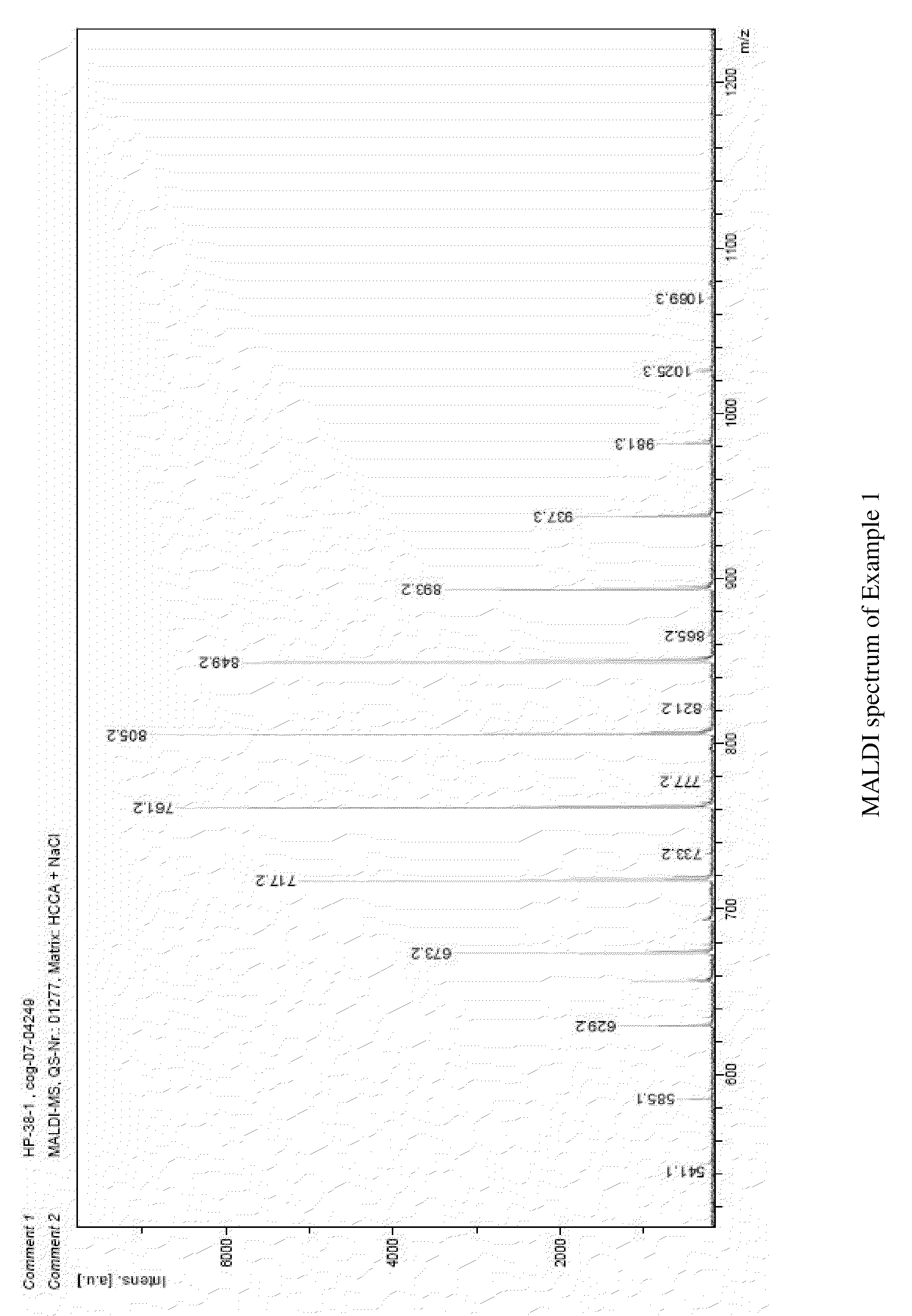Alkylene Oxide Adducts of Oligosaccharides
a technology of alkylene oxide and oligosaccharides, which is applied in the field of agriculture, can solve the problems of poor selectivity, difficult alkoxylation of oligosaccharides, and oligosaccharides starting to decompos
- Summary
- Abstract
- Description
- Claims
- Application Information
AI Technical Summary
Benefits of technology
Problems solved by technology
Method used
Image
Examples
example 1
Saccharose+10 EO
[0074]An aqueous solution of 572 g (1.67 Mol) saccharose in 181 ml water and 4 g of an aqueous potassium hydroxide solution (50% b.w.) were placed in a stirred autoclave. Once the reactor was three times evacuated and purged with nitrogen to remove all traces of oxygen, the mixture was heated to about 125° C. and within about 3.5 h 737 g (16.75 Mol) ethylene oxide was added, while the pressure raised to about 5.5 bar. Subsequently the mixture was left for another 30 min for post reaction, maintaining the temperature at about 130° C., Finally, the reactor was cooled down to room temperature, vacuum was broken and the pH of the products adjusted to about 7 by adding a lactic acid solution. The liquid thus obtained consisted of about 88% of Saccharose+10EO and about 12% water; the PGE content has been less than 1% b.w. FIG. 1 shows the MALDI spectrum of the product.
example 2
Herbicide Compositions
[0075]Table 1 reflects a number of herbicide compositions applicable according to instructions to use Monsanto's ROUND-UP, which are well known for those skilled in the art.
TABLE 1Herbicide compositions (all amounts in % b.w.)Components12345678Glyphosate454545424550——Glufosinate——————45—Paraquat———————45Saccharose + 5EO15———————Saccharose + 10EO—15——————Saccharose + 15EO——15—————Maltose + 10EO———181510——Maltotriose + 12EO——————1515Wateradd to 100
PUM
| Property | Measurement | Unit |
|---|---|---|
| Temperature | aaaaa | aaaaa |
| Percent by mass | aaaaa | aaaaa |
| Percent by mass | aaaaa | aaaaa |
Abstract
Description
Claims
Application Information
 Login to View More
Login to View More - R&D
- Intellectual Property
- Life Sciences
- Materials
- Tech Scout
- Unparalleled Data Quality
- Higher Quality Content
- 60% Fewer Hallucinations
Browse by: Latest US Patents, China's latest patents, Technical Efficacy Thesaurus, Application Domain, Technology Topic, Popular Technical Reports.
© 2025 PatSnap. All rights reserved.Legal|Privacy policy|Modern Slavery Act Transparency Statement|Sitemap|About US| Contact US: help@patsnap.com

